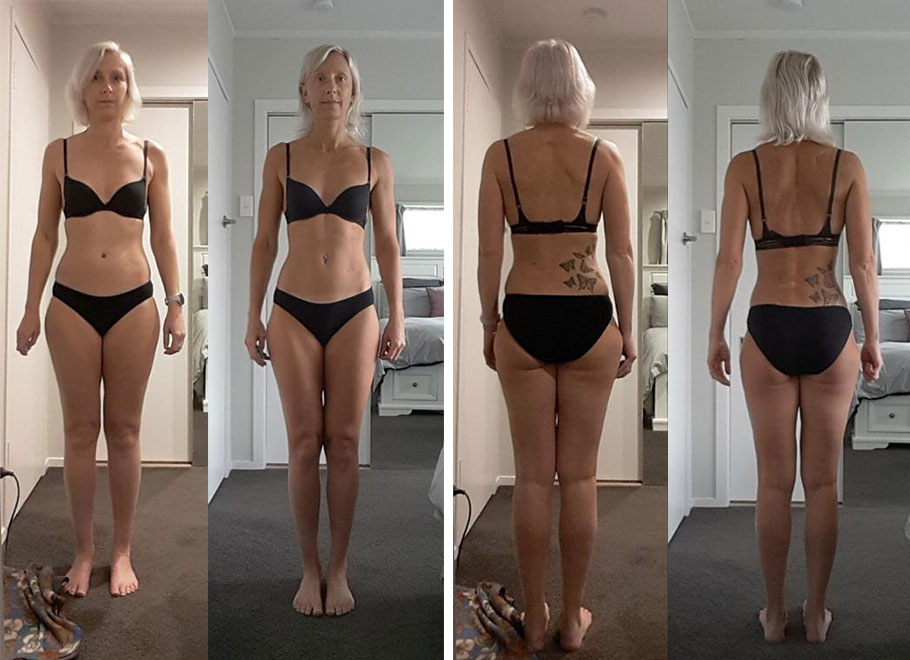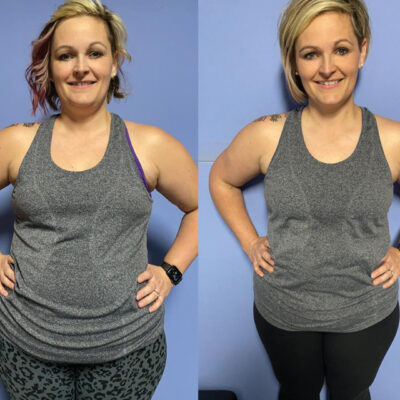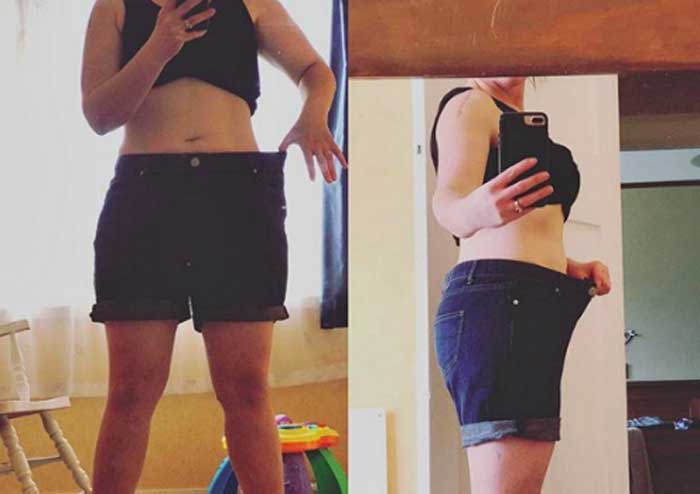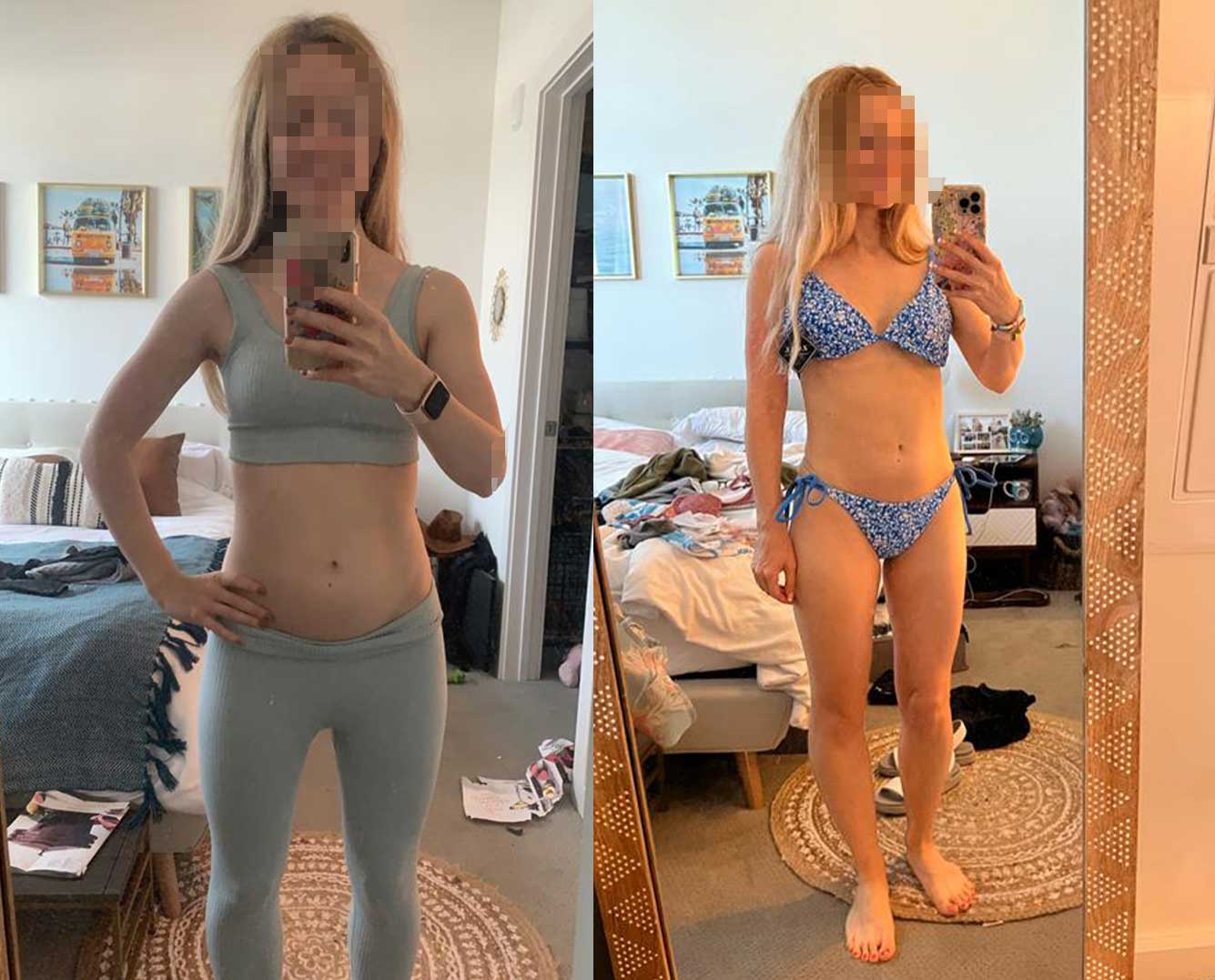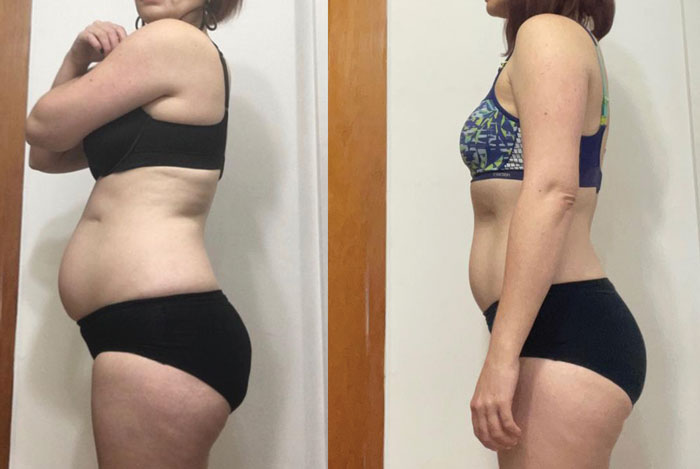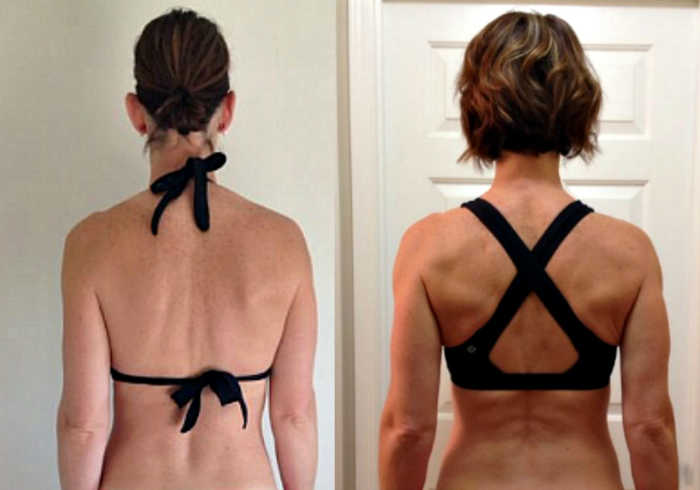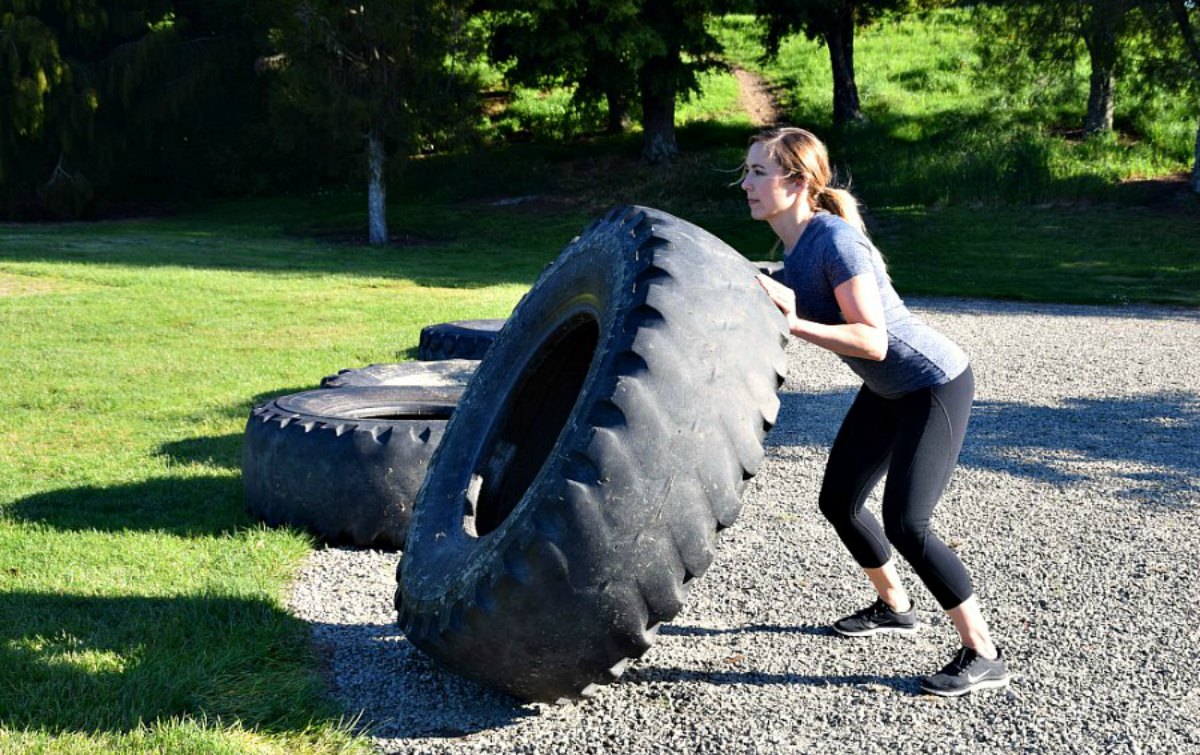
Your quality of life depends on regularly lifting heavy things – regardless of whether you are 30 or 60 years old.
You may not have heard of sarcopenia but you know what it is – and believe me – you need to care because it’s going to impact the quality of your later years. Big time impact.
You probably see it in your aging parents – the subtle changes as they become more frail looking, start moving slower, and have more body pain and less energy. You’ll definitely see it if you visit a senior citizen home. People walking with canes, confined to wheelchairs or, worse, not even able to get out of bed.
This increasing frailty is called sarcopenia, and it’s a sad and scary part of aging. We are all slowly decaying and becoming more decrepit, until eventually we die. Sound dramatic? That’s because I want you to grasp this reality of aging and understand that it is going to impact the quality of your life.
You might think this is an old person’s problem but:
Unless you are doing progressive weight training a few times a week, it’s happening to you.
Why you want to prevent sarcopenia
So what’s the deal? Why am I so concerned about this? Well, I want to have good health and vitality in my later years and be able to take care of myself until the day I die (hopefully at a very old age). Don’t you?
Sarcopenia is age related loss of muscle mass, strength and function. It happens gradually but it starts happening earlier than we think. Some estimate that when we hit our thirties we start losing .5-1% of muscle mass per year and that dramatically accelerates in our sixties.
If you want a high quality of life in your later years, it is crucial that you do everything you can to prevent and reverse sarcopenia.
If you need convincing, visit a senior citizen’s home. Sarcopenia means you may not be able to:
- get out of bed, shower or go to the toilet unassisted
- walk properly, if at all
- cook your own food
- drive
- garden or do other hobbies
- play with your grandchildren.
Loss of muscle mass is a strong predictor of mortality in later life and it increases your risk of:
- falling and not recovering properly
- osteoporosis and fractures
- looking and being frail
- cancer and other age-related diseases
- poor immunity and recovery from illnesses.
But sarcopenia affects us in middle age as well. You might have more aches and pains, less energy, low libido and get sick more often. Loss of muscle mass means everything is less firm and certain parts of us become increasingly saggy so we feel even worse about our bodies.
You probably think these things are a normal part of aging, and to some extent you are right. But you can look and feel better, and you can prevent old age frailty if you know what to do.
How you lose muscle as you age
There are many reasons you lose muscle more easily as you get older. Here are a few of them:
- Your cells start getting more and more messed up and weak as you age. Cell structures change size, misfold, get damaged and/or die. Cell respiration isn’t as good and membrane integrity weakens. Many of these changes to your cells make it harder for us to grow muscle as we age.
- The number and regenerative ability of satellite cells (the progenitor cells for muscle cells) decline during aging.
- Muscles are made up of both slow and fast twitch fibers and, unfortunately, fast twitch fibers are the ones that preferentially are lost as we age. Slow twitch fibers are related to aerobic training and fast twitch are related to anaerobic (weight lifting) training. That’s why you can be physically active but still lose muscle if you don’t lift weights.
- Older adults often have lower nutrient intake, diet-induced metabolic acidosis and don’t consume sufficient protein to maintain and build muscle. (I’ll explain what acidosis is later in this article).
- Older adults have lower levels of anabolic hormones (the ones that help you grow muscle).
- Aged muscles are less responsive to weight training than young muscles.
- Older adults may be less physically active and, even if they are active, they don’t do the right kind of exercise necessary to build and maintain muscle mass.
How to keep your muscles and prevent sarcopenia
1. Progressive weight training
If you aren’t doing some sort of weight training, you are losing muscle mass. Cardio, sports, yoga and gardening will all help but they aren’t enough.
You must understand this – every single older adult I’ve talked to about muscle loss mistakenly believes that being physically active is enough. Research shows that weight training is more effective than any other form of exercise and, in fact, is crucial to preventing sarcopenia.
Studies show that progressive, weight training several times a week is crucial to preventing muscle loss as we age. Just being physically active is not enough.
Sometimes there is a belief that older adults shouldn’t lift weights. However, there’s no reason to be afraid of a properly designed, progressive weight training program – even if you are in your 60s or older.
Studies show improvements with as little as one weight training session per week and that even people over 90 years old can have improvements in muscle strength. Studies have also shown that improvements in muscle strength and size in healthy older people can be comparable to muscle strength seen in younger individuals, and I’ve certainly seen this with my own clients.
Progressive overload is a key part of muscle building that you must understand and practice. It means gradually increasing the load you put on your muscles over time which causes them to get stronger and grow. It means you have to lift weights that are challenging and lift more weight or with better form every time you train.
Most people don’t understand progressive overload and how to train at the right intensity until they work with a good coach (so the best thing you can do is invest in a trainer to help you learn!).
2. Eating the right quality and quantity of foods
Older adults often have an inadequate nutrient intake and this affects their ability to retain and grow muscle. One of the nutrients that the general population tends to undereat – especially as they get older – is protein.
Protein is essential to building and preserving muscle mass. If you don’t eat enough of it, you risk losing muscle. Studies show that older adults benefit from eating more protein that is usually recommended in the government guidelines. Government guidelines typically recommend about .8g protein/kg of body weight while research suggests 1-1.5g of protein/kg might be more appropriate.
EXAMPLE PROTEIN REQUIREMENTS
For a woman who weighs 65 kg (143 lbs), a good daily protein intake could be 65-98g/day. With that goal in mind, if she eats three meals and one snack per day, she needs to get about 20g of protein per meal to fall in the middle range.
For a man who weighs 82 kg (180 lbs), a good daily protein intake could be 100-130g. If he eat three meals and one snack per day, he needs to get 25-30g of protein per meal.
(If you aren’t sure what a portion size of protein looks like, I’ve got a guide including some printable templates you can print out here.)
Older adults often undereat which not only means they won’t get enough protein, but other essential nutrients. It’s important to eat regular, balanced meals. Monitoring your weight is one of the best ways to assess whether you are eating enough. If you are losing weight and getting lighter as the years pass, it could mean you need to eat more.
Some health experts suggest that low-grade acidosis also contributes to sarcopenia. Acidosis refers to a condition where your bodily fluids and cells become more acidic. If you consistently eat a diet high in acid-forming foods, you may suffer from low-grade acidosis which affects your bone health and muscle. To get the right balance, you need to eat plenty of fruits and vegetables and less acid forming foods such as animal protein, dairy and soft drinks.
3. Taking supplements for your muscles
It’s not just bodybuilders who need muscle building supplements – you will benefit from them too! Interestingly, the supplements listed here are not only good for helping retain and build muscle mass but they also are anti-aging in many other ways. For example, there is increasing interest in creatine as an anti-aging supplement because of it’s beneficial effects on energy and brain health.
Protein powder
As I discussed earlier, older adults have higher protein requirements. One of the easiest ways to increase your protein is by adding in at least one serving of protein powder daily. Protein powder is a great way to boost the protein in your breakfast or a snack – which is where people often fall short. It can be used in smoothies, blending with your morning oats, or making homemade snacks. It’s an economical option and it provides variety to your diet (also helpful if you are worried about inflammation and don’t want to consume too many animal sources of protein).
Choosing a protein powder can be overwhelming so stick to simple options with minimal ingredients. There are many good “lifestyle” brands (as opposed to the more hard-core bodybuilding style brands) that contain only protein powder or a mix of protein powder and a few other healthy ingredients like greens and antioxidant blends.
Vitamin D
As we get older, low vitamin D levels are associated with sarcopenia, muscle weakness, poor muscle function, difficulty getting up from a chair, balance, and increased falls. Even in younger adults and athletes, we know that vitamin D affects muscle mass, strength and performance.
It’s pretty much impossible to get enough vitamin D unless you can expose your skin to sun everyday. In fact, my doctor wouldn’t even test me for it because she just assumes everyone would benefit from supplementing. Ideally, you would get tested but if you can’t, in the very least you can supplement on days you don’t get sun exposure (without sunscreen). There’s a lot of debate as to how much you should take. As with most supplements, don’t go overboard because more is not necessarily better. Personally, I take 1000 IUs most days except those when I get good sun exposure. Many health experts now recommend choosing supplements that also have vitamin K2, which helps vitamin D work properly.
Creatine
Creatine is one of my favourite supplements – and, no, it’s not a steroid nor will it harm your kidneys. It’s widely misunderstood by the general population, which is a shame because it’s got a lot of potential to help with muscle mass but also as a longevity supplement.
Your body naturally produces creatine and it’s important for transporting and storing energy in every cell. Your body eliminates a bit of it each day so it’s important to replenish it. Meat and fish provide our main dietary sources of creatine but many athletes and serious gym junkies top themselves up with a daily supplement.
Because of the way creatine works on the energy pathways in your cells, it helps you train longer and harder. When you can train with more intensity and delay fatigue, you can build more muscle. Many studies demonstrate creatine’s positive effects on strength and body composition in older adults, especially when combined with a weight training program. It may also help prevent muscle breakdown and be a potential therapy for some diseases that cause muscle wasting. Remember those fast twitch muscle fibers I mentioned earlier that we lose as we get older? Well, creatine seems to help preserve them as well.
In addition to the beneficial effect on muscle mass, creatine supplementation may improve brain performance and offer neurological protection as we age making it an all around great anti-aging supplement.
Look for a pure powder form of creatine and take 5g per day (dissolved in water). Micronised versions should dissolve better.
Fish oil
Omega-3 fatty acids from fish oil seem to have anabolic properties, which means they may help you grow muscle. Fish oil may also help prevent muscle degradation. Studies have found that older adults treated with omega-3s were better able to retain their muscle mass and function than their peers. For these reasons, there is interest in the use of fish oil as a treatment for sarcopenia along with nutritional strategies, including getting enough protein, and weight training.
There’s not enough research to make recommendations as to how much exactly would help you with muscle mass but taking a daily dose of a high quality fish oil couldn’t hurt.
Share this with someone you love
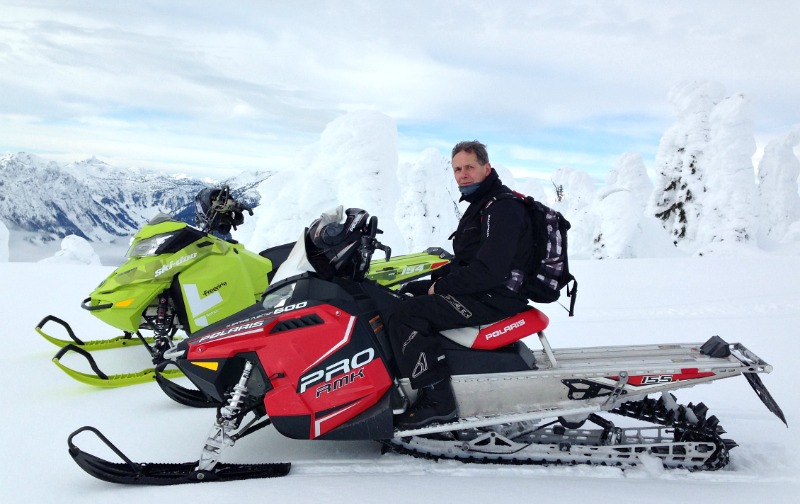
My Dad is a hard-charging recent retiree. In his 60s, he still wants to be doing extreme sports and loves pushing himself. After a snowmobiling accident this winter, his physio told him he should do more yoga. But yoga isn’t going to get him the results he wants. If he really wants to stay strong, he needs to follow a progressive weight lifting program where his focus is on retaining and building muscle.
I realize if you’ve never lifted before, it can be hard to know where to start. It would be best to hire a personal trainer to help you learn the basic weight lifting techniques and set you up with a good program. If you don’t have access to a trainer, look for a suitable online program and make sure it has plenty of videos, exercise instruction and support. Your quality of life depends on regularly lifting heavy things – regardless of whether you are 30 or 60 years old.
If you know someone who could benefit from this article, be sure you send it to them. I’ll be emailing it to my Dad as soon as I hit publish.

